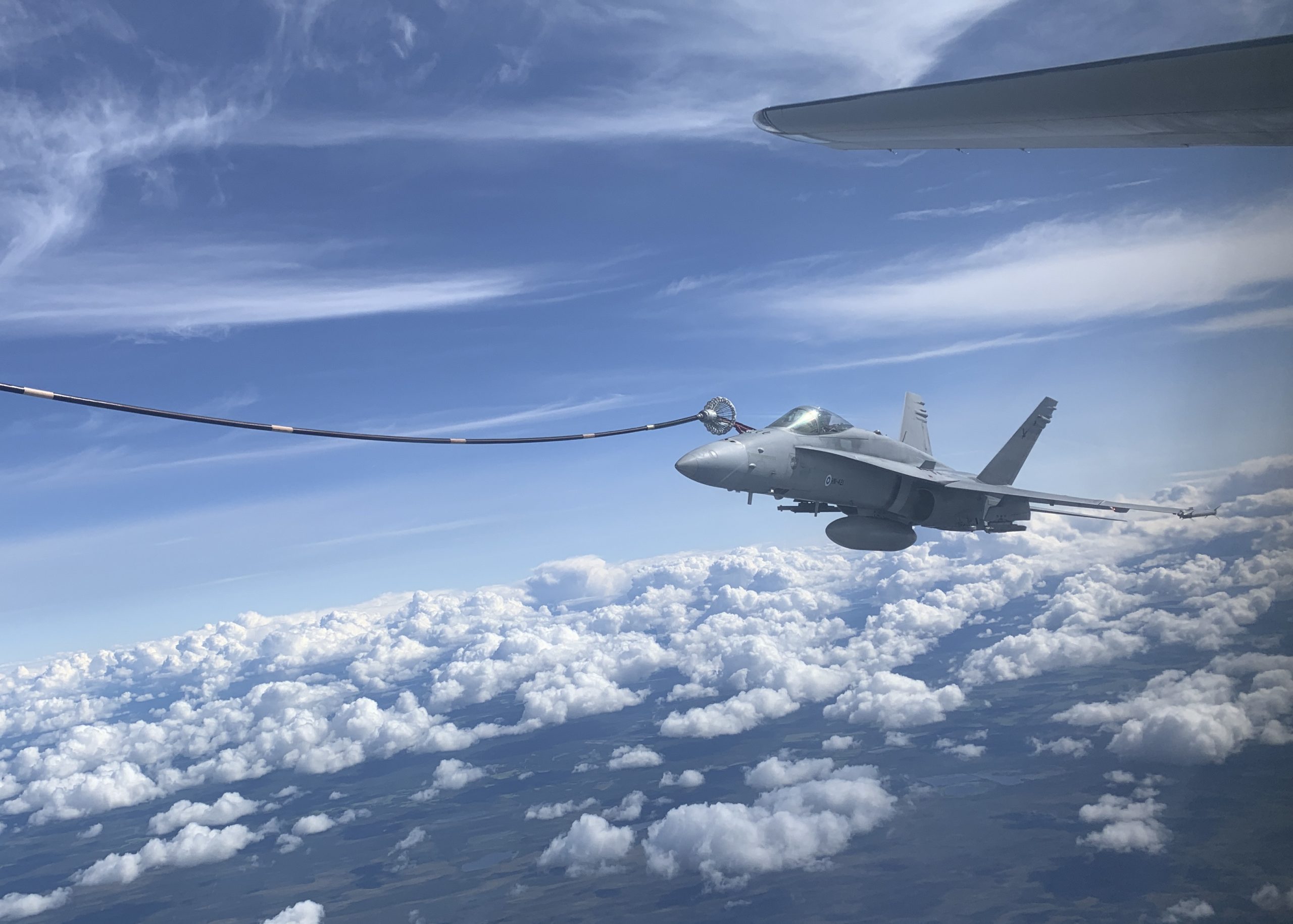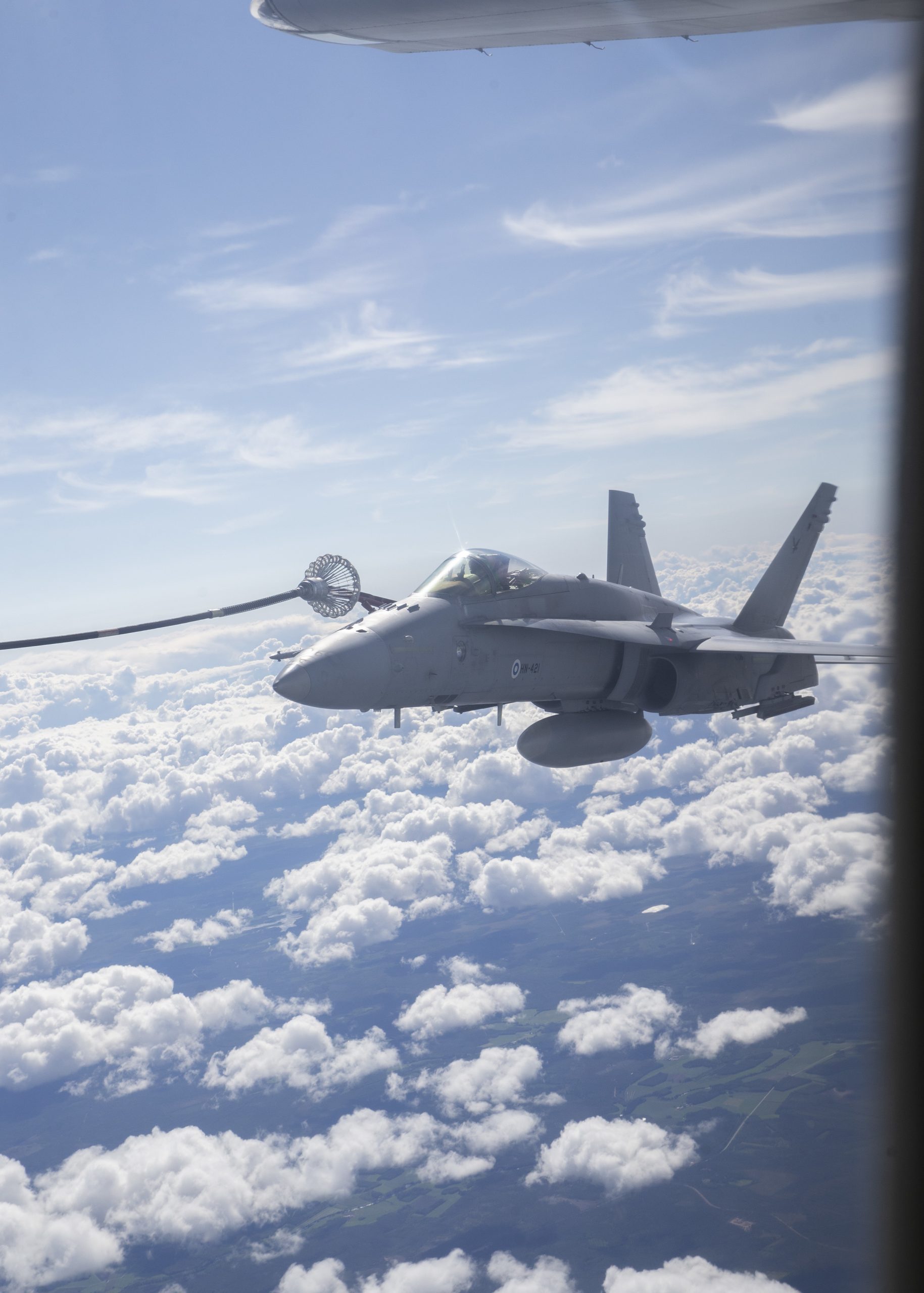By Robbin Laird
During my visit to 2nd Marine Aircraft Wing in July 2021, I had a chance to talk with MAG-31, notably the VMFA-115 Operations Officer, about their squadron’s time in Finland training with the Finnish Air Force last month.
Because I was in MCAS Cherry Point, and not at MCAS Beaufort, we did the discussion from a conference room at MCAS Cherry Point. The MAG-31 operations officer, Lt. Col. Waller and the VMFA-115 Operations Officer, Maj. Simmermon discussed the training effort with me.
Originally, VMFA-115 was to participate in a multi-national exercise, Arctic Challenge 2021. But because of COVID-19 restrictions, their engagement became a bilateral exercise with the Finnish Air Force.
This provided an important window on how one might modify training going forward.
What VMFA-115 learned was how the Finns fight.
How they operate their air force in a truly distributed manner. How they use their roads for landing sites; distributed logistical support and work under the shadow of Russian long-range fires.
Clearly, Marines learning to fight as the Finns fight is a good thing, and part of the cross-learning process which is necessary for U.S. forces to be familiar with various concepts like distributed maritime operations, littoral operations in a contested environment, and expeditionary advanced base operations.
All concepts that provide an understanding of how to operate in the High North back to the Baltic Sea.
This is how Maj. Simmermon put the experience:
“A year ago, we were preparing for Arctic Challenge 21. If we had participated in an Arctic Challenge exercise, it would have been a big mission planning exercise and very scripted.
“We would have most likely used our own tactics and tried to incorporate into what the other countries were doing for their own tactics.”
“But it became a bilateral exercise called ILVES. We were able to train with them in their tactics. A great tactic VMFA-115 was able to observe was the Finns diverting and spreading out to reduce the effects from a potential strike on their location. They showed us how they’re able to set up expeditionary arresting gear, where they put their support and how they taxi the aircraft.
“We then had one of their instructor pilots get in their simulator with us, where we practiced road landings which was a relatively benign mission, really; just taking off and landing on small, short expeditionary runways.
“The whole system relies largely on the logistics support and the infrastructure for their road runways, which are already in place.”
He added: “Doing the bilateral training that we did during ILVES, exposed us to smaller level tactics, techniques, and procedures, which I had never seen before.
“Those conversations and briefs would not have been available in a big exercise like “Arctic Challenge ,“ but it was as you mentioned, a whole logistics and infrastructure aspect of aviation, as well as a unique divert strategy, and changing the way your force is employed by consolidating in the air and understanding their TTPs.”
“It reminds you that even as a globally deployable force, it’s important to see that there are a lot of different ways and different geographical locations, specifically Finland and their neighbors that change the way an aviation unit fights or how a conflict in general is executed.”
“Seeing how other nations fight was very valuable.
“I would emphasize that going to any country that has a different defense strategy or offensive strategy for that matter is very eye opening, if they’re willing to share with you some of their considerations and how they employ their forces.”
When visiting Finland in 2018, I discussed with a senior Finnish defense officer, who was former head of the Finnish Air Force, the unique way the Finns use their air combat capabilities in the defense of Finland.
As Lt. General Kim Jäämeri put it: “It is becoming clear to our partners that you cannot run air operations in a legacy manner under the threat of missile barrages of long-range weapons.
“The legacy approach to operating from air bases just won’t work in these conditions. For many of our partners, this is a revelation; for us it has been a fact of life for a long time, and we have operated with this threat in the forefront of operations for a long time.”
I also discussed with Norwegian Air Force officers, their ramped up cooperation with the Finns and Swedes in airpower integration.
This is being done in part with their cross-border training,
As I noted in a 2018 interview: “From 2015 on, the three air forces have shaped a regular training approach, which is very flexible and driven at the wing and squadron level.
Major Ertsgaard added that “We meet each November, and set the schedule for the next year, but in execution it is very, very flexible. It is about a bottom-up approach and initiative to generate the training regime.”
“The impact on Sweden and Finland has been significant in terms of learning NATO standards and having an enhanced capability to cooperate with the air forces of NATO nations.
“And the air space being used is very significant as well. Europe as an operational military airspace training area is not loaded with good training ranges.
“The range being used for CBT is very large and is not a cluttered airspace, which allows for great training opportunities for the three nations, and those who fly to Arctic Challenge or other training events. And the range flies over land so there is an opportunity for multi-domain operational training as well.”
Since 2018, the Marines have ramped up their efforts to train in the Nordic region and to operate in cold weather.
With the Nordics ramping up their defense capabilities and working greater integration with each other and with their North Atlantic partners, there are enhanced opportunities for Marines to work in the region as well.
I discussed the importance of Nordic defense and its impact on U.S. forces learning with VADM Lewis in my interview with him on July 16th, the day after the ceremony launching the Allied Joint Forces Command Norfolk for full operational capability.
In the period in which 2nd Fleet was re-established, the Nordic nations have clearly ramped up their defense efforts and cooperation with each other and with the United States and NATO.
This learn from others approach is a key part of how VADM Lewis has led his command.
As he commented: “That has been my mantra from day one here: learning from our regional operations. As we work how best to operate in the region, we are learning from our regional partners some of the best ways to do so.”
And for the Carolina-based Marines, this means expanded opportunities to learn from our Nordic partners as well as they worked enhanced integration with the U.S. Navy.
For a detailed look at the role of Nordic defense modernization in meeting the challenge of direct defense in Europe, see our recent book on the subject:




